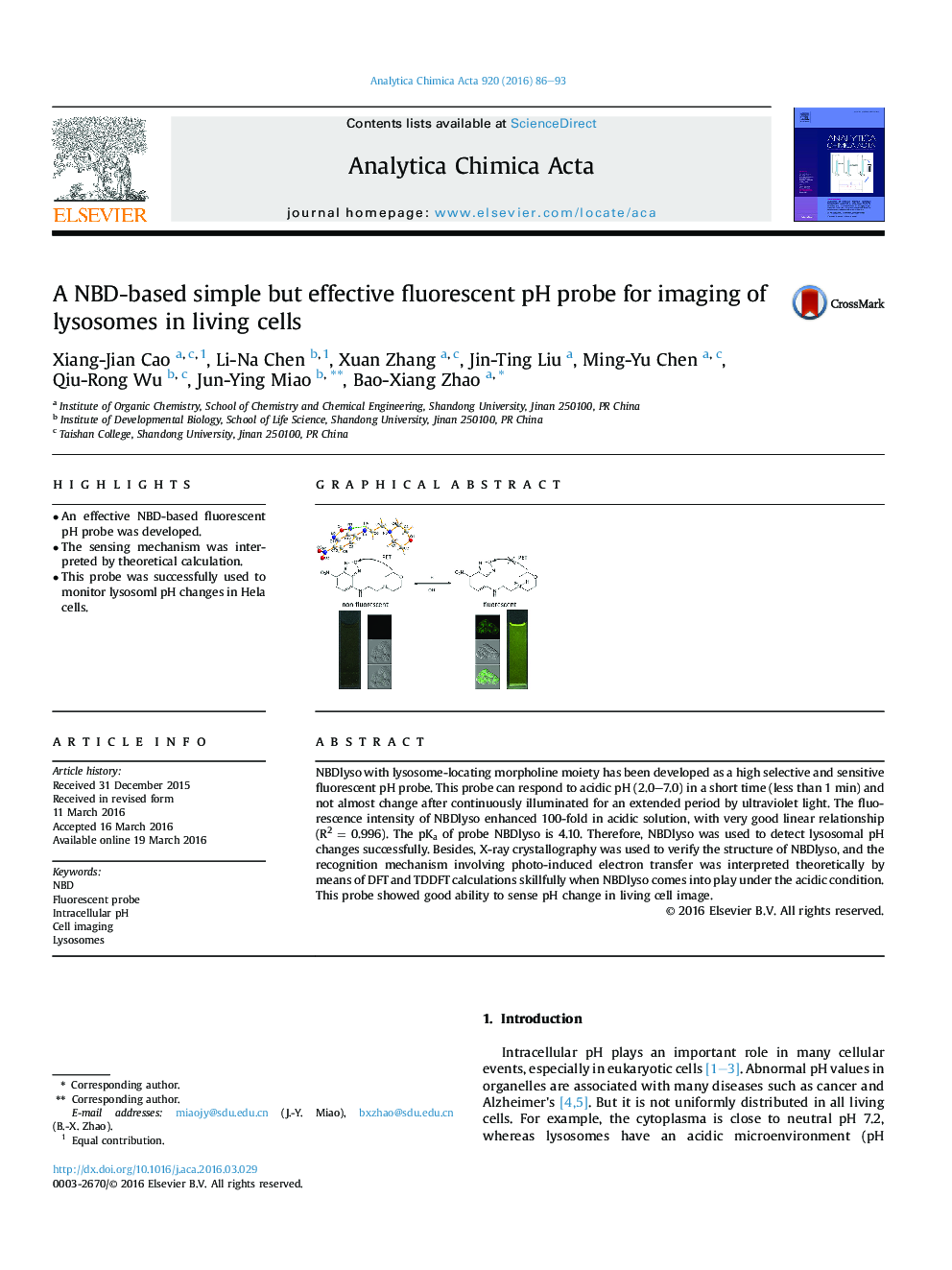| Article ID | Journal | Published Year | Pages | File Type |
|---|---|---|---|---|
| 1162826 | Analytica Chimica Acta | 2016 | 8 Pages |
•An effective NBD-based fluorescent pH probe was developed.•The sensing mechanism was interpreted by theoretical calculation.•This probe was successfully used to monitor lysosoml pH changes in Hela cells.
NBDlyso with lysosome-locating morpholine moiety has been developed as a high selective and sensitive fluorescent pH probe. This probe can respond to acidic pH (2.0–7.0) in a short time (less than 1 min) and not almost change after continuously illuminated for an extended period by ultraviolet light. The fluorescence intensity of NBDlyso enhanced 100-fold in acidic solution, with very good linear relationship (R2 = 0.996). The pKa of probe NBDlyso is 4.10. Therefore, NBDlyso was used to detect lysosomal pH changes successfully. Besides, X-ray crystallography was used to verify the structure of NBDlyso, and the recognition mechanism involving photo-induced electron transfer was interpreted theoretically by means of DFT and TDDFT calculations skillfully when NBDlyso comes into play under the acidic condition. This probe showed good ability to sense pH change in living cell image.
Graphical abstractFigure optionsDownload full-size imageDownload as PowerPoint slide
